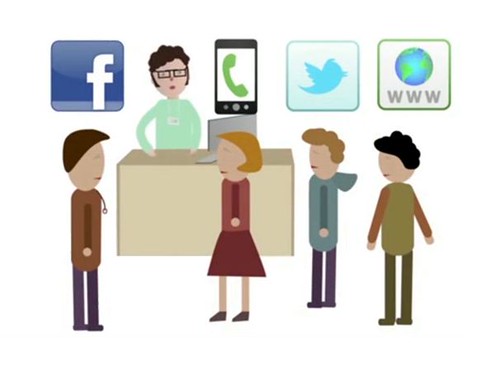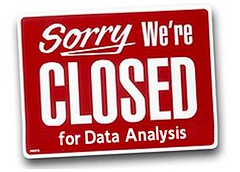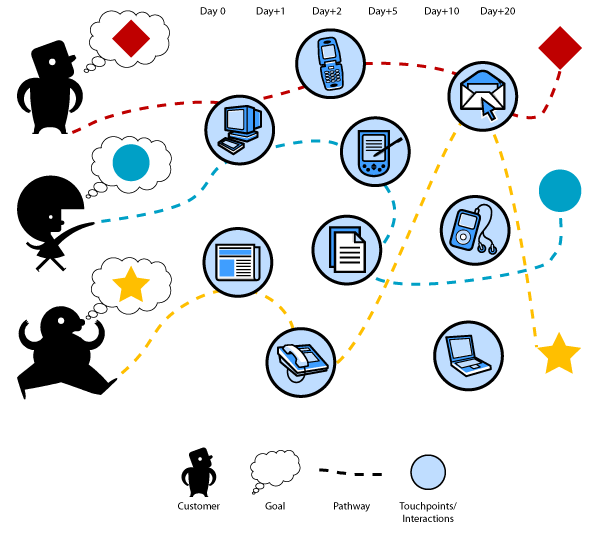
In our first post 'real time customer intelligence, right here, right now?' we raised the idea that some savvy marketers have been getting the right message to the right person at the right time for years – we call them 'Shopkeepers'.
But the 'recent' explosion of marketing channels has brought about some fairly complex challenges that even our friendly shopkeeper would struggle with.
So how in today's connected world can we serve and delight thousands of smart customers on different channels and different devices all at the same time?
 Just think about it, in the last ten years the way we, as consumers, find, consume and share information on products and services has changed forever.
Just think about it, in the last ten years the way we, as consumers, find, consume and share information on products and services has changed forever.
As businesses we now have access to more data than ever before, so much so that just calling it data is no longer enough, we've created a fashionable (and increasingly contentious) catchphrase for it.
But why are we so excited about all this big data?
Well, as any database marketer worth their salt will tell you, the most powerful dimension of this data isn't it's size at all, no it's the recency of it, or more accurately the 'immediacy' of it.
To understand quite why the data geeks have all gone a little bit 'giddy' we need to look at what we were doing before we had this data:
Think of a customer experience as being like a meal in a fancy restaurant. Before we had real time data we could only try and piece together what the meal was like after everyone had gone home using the clues that were leftover.
Actually, we became rather good at it:
- Did they make a reservation?
- Had they been before?
- What did they order?
- What wine did they choose?
- How much did they leave on the plate?
- Did they have dessert?
- Did they leave a tip?
- Did they complain?
..and the list goes on, using predictive analytics to piece together the clues we could try and answer the important questions:
- How likely are they to come back?
- How much will they spend?
- What might tempt them back in?
Today, in terms of data, things are very different, we've finally been granted a seat at the table (so to speak). We can see what the experience is like first-hand, as it happens. We can observe what is being 'consumed' and the 'conversations' taking place around it.
We can understand the decision making process: the menu being perused, the options being considered.
 We have become data rich, not only does this mean we can stop guessing, but if we can interpret it fast enough - we can react intelligently where it will have the most power, in the middle of the live 'conversation'.
We have become data rich, not only does this mean we can stop guessing, but if we can interpret it fast enough - we can react intelligently where it will have the most power, in the middle of the live 'conversation'.
The immediate benefits of tapping into this real time data are obvious, and for organisations already using this data at a customer level there are quick wins to be had simply by recognising customers and providing more relevant offers.
But make no mistake, the privilege of having this real time data will be short-lived unless we use it develop more intelligent, deeper customer experiences.
After all, no-one likes a dinner guest who constantly talks about themselves and doesn't listen.
To move beyond using real time data to simply create or influence the next sales opportunity requires some added intelligence. It means stiching up these isolated customer experiences into a long term view of interactions from all channels.
Only then do we start to understand the full DNA of the customer journey and spot 'out of pattern' behaviour.
This is real time customer intelligence at work and there is little doubt it holds the key to fostering a relationship both businesses and consumers appear to want.
There is however an undeniable gap between what is possible and what organisations are doing about it.
The issue of course is that despite having a restaurant full of hungry customers, a larder full of the finest ingredients and a kitchen full of modern appliances - many businesses are still missing one critical element - the Chef.
In our next post we will be looking at the different flavours of real time customer intelligence and cooking up some quick recipes for success.

(Customer Journey graphic reproduced with kind permission from Mel Edwards from his blog desonance.wordpress.com)
No hay comentarios:
Publicar un comentario